We have previously conducted focused inspection campaigns based on assessment of port State control statistics. We use these statistics to work out what areas require special attention.
- Livestock ships—1 March 2021 to 31 August 2021
The purpose of the campaign was to determine the level of compliance with maintenance and repair requirements of international conventions and to ensure masters, officers and operators of livestock ships are complying with specific requirements of Marine Order 43 for ships that hold an Australian Certificate for the Carriage of Livestock (ACCL).
Lockdowns in various states, and restrictions implemented to protect AMSA staff and the Australian public, limited the number of ships that could be inspected during the FIC. Ships that had visited a foreign port less than 14 days prior to arrival in Australia were not inspected meaning that AMSA inspected 14 out of 26 individual livestock ships that visited Australia during this period.
Results
The three least favourable deficiencies observed were:
- Three ships had livestock pens that could not be effectively drained of fluids under any expected condition of trim or angle of heel.
- Two ships did not provide satisfactory non-slip surfaces for livestock.
- Two ships had not undergone thickness measurement gauging at the last special survey in accordance with Classification Rules.
AMSA found one ship that did not use accurate values for the calculation of ship stability for its voyage. One ship had made changes to structural arrangements onboard that were not sanctioned by the ships flag administration. One ships’ crew were not familiar with the onboard procedures to restore power.
On all ships inspected, AMSA Inspectors observed that:
- the Master was aware of the weather forecast for the ships intended voyage
- tanks, void spaces, and pumps were inspected and maintained as required by the vessel’s onboard maintenance program
- drainage tank/well eductors and pumps were capable of being powered by both the main and secondary source of power
- the ventilation was operating satisfactorily
- the ship was maintained after survey in accordance with SOLAS Chapter I, regulation 11
- watertight doors under the freeboard deck, and their remote indicators, were functioning satisfactorily.
Our continued focus
Most ships inspected were compliant with the requirements of Australian Marine Order 43 and the international conventions, however the deficiencies observed during a relatively low number of inspections is of concern to AMSA.
AMSA will continue to focus on livestock ships to ensure compliance with Marine Order 43 and international convention requirements. AMSA continues to monitor the compliance of livestock ships through its port State control regime as well as surveys and inspections as required under Marine Order 43.
Livestock Ship FIC Results
Question Yes Yes% No No% N/A 01. Is the Master aware of the weather forecast for the intended voyage? 14 100% 0 0% 0 02. Are tanks, voids and pumps inspected and maintained as per the Documented Maintenance Program (DMP)? 14 100% 0 0% 0 03. Where a drainage tank or well has an eductor or pump, is it capable of being powered by both the main and secondary source of power and operation demonstrated? 14 100% 0 0% 0 04. Can crew demonstrate operational familiarity with restoring power if the secondary source of power fails to start automatically? 12 92% 1 8% 1 05. Can livestock pens be effectively drained of fluids under any condition of trim or angle? 11 79% 3 21% 0 06. Is the ventilation operating satisfactorily? 14 100% 0 0% 0 07. Is the nonslip surface for deck for pens, passageways, and ramps satisfactory? 12 86% 2 14% 0 08. Has the ship undergone thickness measurement gauging in accordance with the Classification Rules? 12 86% 2 14% 0 09. Are all sewage effluents drained in accordance with MARPOL Annex IV? 14 100% 0 0% 0 10. Has the ship been maintained after survey in accordance with SOLAS Chapter I, Reg 11? 14 100% 0 0% 0 11. Is there evidence of a change to the structural arrangements without sanction by the Administration? 1 8% 12 92% 1 12. Have accurate values been used for calculation of ship stability for the intended voyage? 13 93% 1 7% 0 13. Are watertight doors, and remote indicators installed, under the freeboard deck functioning satisfactorily? 11 100% 0 0% 3 14. Have deficiencies been issued as part of this FIC? (MO43 SVCC) 2 14% 12 86% 0 15. Has vessel been prohibited from loading as part of this FIC? (MO43 SVCC) 0 0% 13 100% 1 16. Have deficiencies been issued as part of the PSC (Form B) 7 54% 6 46% 1 17. Has the ship been detained as part of this FIC? 0 0% 14 100% 0
- Proper stowage and securing of cargo containers—1 August to 31 October 2020
AMSA conducted a Focussed Inspection Campaign over the period 1 August to 31 October 2020, targeting the proper stowage and securing of cargo containers.
The results of the FIC indicate that in general, the physical hardware onboard (fixed and portable lashing equipment) ships visiting Australia, was maintained to a reasonable standard.
Information gathered during the campaign indicated that, in general, Ships Officers’ struggled to demonstrate the necessary understanding of the approved Cargo Securing Manual to ensure that containerised cargo was properly stowed and secured. This conclusion is reinforced by several deficiency appeals in the last 18 months relating to the Cargo Securing Manuals held onboard, as well as recent engagement with Class Societies over the Cargo Securing Manual vs lashing computer.
Results
During the campaign, a AMSA conducted a total of 208 focussed inspections.
The three worst results were as follows:
- We found 12 ships that exceeded the maximum permissible container stack weights during the current or previous voyages, giving a 5.8% negative result.
- Eight ships did not comply with weight distribution within stacks during current or previous voyages- a 3.8% negative result.
- Eight ships were found to have not secured cargo appropriately throughout the voyage to prevent potential loss overboard, a 3.8% negative result
The best results included:
- Masters and Officers familiar with the SMS requirements for heavy weather navigation and appropriate checklists available. (162) (45 - N/A).
- Twist locks and base locks positioned correctly (79) (128 N/A).
- Fixed cargo securing equipment in good condition (148) (59 N/A).
- Masters had been provided with Verified Gross Mass information for containerised cargos (82)(125 N/A).
Two ships were detained as a direct result of the Focussed Inspection Campaign.
- Maersk Seoul – Detained for the incorrect use of portable lashing equipment onboard.
- Nefeli – Detained for the majority of cargo hold pontoon securing pins being found defective & defective fire dampers. Several deficiencies were issued in relation to the FIC, including instances where the lashing forces exceeded maximum allowances.
Our continued focus
Since the campaign, AMSA has continued to observe failures of fixed physical securing arrangements onboard ships visiting Australia. This has been disappointing, and is something that AMSA does not take lightly. When we observe this during our port State control inspections, we will detain the vessel and direct that containers are discharged and repairs effected.
AMSA will continue to focus on cargo securing arrangements during our port State control inspections and will take steps to bring ships into compliance.
Some images of what AMSA has observed recently are pictured below.
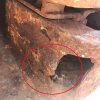
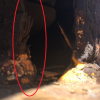
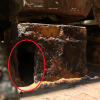
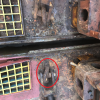
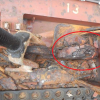
- Securing arrangements of cargo containers—1 February 2010 to 30 April 2010
From 1 February to 30 April 2010 AMSAs surveyors conducted a Focused Inspection Campaign (FIC) in order to provide AMSA with an understanding of the current practices and suitability of equipment employed in the stowage and lashing of cargo containers.
The FIC targeted all vessels that load containerised cargo, both foreign and domestic. The vessel types targeted during the campaign included container, ro-ro, and general cargo vessels.
During the course of the campaign, AMSA surveyors inspected 111 vessels, and recorded 36 deficiencies on 21 vessels. A deficiency found on one vessel warranted the vessels detention.
Overall, the major concerns for AMSA were that in 10% of the vessels inspected, surveyors recorded deficiencies in relation to containers not lashed in accordance with the vessel’s cargo securing manual. Additionally, in 8% of the vessels inspected, the condition of the container lashings and fittings was a cause of concern.
- Cargo gear campaign—1 May to 30 June 2019
Due to persistent worldwide reports of failures involving ships’ lifting appliances, AMSA (in conjunction with Maritime New Zealand) conducted a Focussed Inspection Campaign (FIC) on cargo gear 1 May 2019 to 30 June 2019.
The purpose of the FIC was to verify compliance with international guidelines as given effect to by Marine Order 32 – ‘Cargo Handling Equipment’ and to check cargo gear maintenance and operational requirements are documented in the ship’s safety management system (SMS).
During the campaign AMSA surveyors inspected 335 ships and found a high level of compliance as shown below:
The three worst results were as follows:
- The Master does not keep an up to date register of material handling equipment for the vessel (1.9%)
- Cargo operations are not monitored by ship’s crew (1.1%)
- Material handling equipment has not been inspected as per Marine Order 32 (ILO) requirements (0.6%)
The three best results were as follows:
- The ships records indicate that equipment used in loading or unloading has been maintained (100%)
- Material handling equipment marked with the safe working load (SWL) and other markings as per MO32 (100%)
- Maintenance of the cargo gear is included in the SMS (100%)
- Visibility and collision avoidance campaign—1 December 2000 to 31 March 2001
The initial phase of the campaign conducted between 1 December 2000 and 31 March 2001 focused on collision avoidance issues. During this phase AMSA surveyor's inspected 1057 ships, of which 132 (12 per cent of those inspected) recorded deficiencies in the following areas.
- Bridge visibility, with emphasis on the effect of cargo on visibility, accounted for 4 per cent of the deficiencies recorded
- The operation of radars accounted for 11 per cent of the deficiencies recorded
- Navigation lights, both to ensure their serviceability and the effect posed by cargo on their visibility, accounted for 85 per cent of the deficiencies recorded.
The high proportion of the deficiencies relating to navigation lights, etc were primarily due to a lack of maintenance. All ships with deficiencies had at least one deficiency relating to navigation lights, shapes and whistles. Two ships had deficiencies that warranted a detention.
- Global maritime distress and safety system campaign—1 April to 31 July 2001
The second phase of the campaign conducted between 1 April 2001 and 31 July 2001 focused on SOLAS Chapter IV requirements related to global maritime distress and safety system (GMDSS). Problems areas identified during port state control inspections were of concern, along with concerns expressed internationally over the high number of false alerts. During this phase, AMSA surveyors inspected 1114 ships, of which 465 (42 per cent of those inspected) recorded deficiencies in the following areas.
- The ability of members of the crew to use the GMDSS equipment, despite holding valid and appropriate qualifications, accounted for 54 per cent of the deficiencies recorded.
- Appropriate provisions onboard to support the operation of the GMDSS system accounted for 36 per cent.
- The qualifications of the operators accounted for 6 per cent.
- Understanding by the crew of operating procedures, particularly in relation to the actions required when sending or receiving a distress alert accounted for 4 per cent.
Nine ships had deficiencies that warranted a detention, in all cases relating to MF/HF DSC radio equipment.
- Crew living conditions campaign—1 August to 30 November 2001
The third phase of the campaign conducted between 1 August 2001 and 30 November 2001 focused on crew living conditions and issues concerning the International Convention on Standards of Training, Certification and Watchkeeping (STCW) for Seafarers as amended in 1995 (STCW 78/95). During this phase, AMSA surveyors inspected 1025 ships, of which 124 ships recorded deficiencies relating to crew living conditions (12 per cent of those inspected) and 78 recorded deficiencies relating to STCW 78/95 issues (8 per cent of those inspected).
We recorded significant crew living condition deficiencies in the following areas:
- sanitary facilities 27 per cent
- galley handling rooms 19 per cent
- lighting 7 per cent
- drainage 4 per cent
- other (miscellaneous) 43 per cent
We recorded significant STCW 78/95 deficiencies in the following areas:
- certificates for masters and officers 34 per cent
- certificates for ratings for watchkeeping 16 per cent
- certificates for radio personnel 5 per cent
- other (miscellaneous) 45 per cent
This part of the campaign was also used as a mechanism to increase awareness of the possible impact of the end of the transitional provisions of STCW95 on 31 January 2002.
Where certification of seafarers did not fully comply with the STCW95 requirements that would be in force from 1 February 2002, a letter of warning was issued to the ship. 313 such letters were issued, indicating that 30 per cent of ships were crewed by seafarers whose certification was not in full compliance with STCW95. This issue was later recognised by IMO which issued a circular (STCW.7/Circ12) recommending that AMSA surveyors issue letters of warning after 1 February 2002 in such cases rather than detain ships for these deficiencies.
No ships warranted a detention resulting from the items inspected under the focused inspection campaign.
- Carriage of cargoes and dangerous goods campaign—1 December 2001 to 31 March 2002
The fourth phase of the campaign conducted between 1 December 2001 and 31 March 2002 focused on the requirements of SOLAS Chapters VI and VII, the carriage of cargoes and the carriage of dangerous goods.
The AMSA surveyor's inspection checklist was in two parts:
- general cargo and containerised cargo management
- dry bulk cargo management
During this phase, surveyors inspected 799 ships and AMSA surveyors issued deficiencies to 80 ships relating to various cargo issues. This represents 10 per cent of the eligible ships inspected.
The breakdown of ships inspected by ship type was as follows:
Ship type Inspections Deficiencies Percentage of inspections with deficiencies Bulk carrier 532 55 10.3% Container 115 4 3.5% General 62 4 6.5% Ro-Ro 13 2 15.4% Vehicle 45 1 2.2% Other 32 14 43.8% TOTAL 799 80 The breakdown of deficiencies by type was as follows:
Deficiency area Number Percentage Stability data, loading instruments 18 22.5% Cargo documentation/ information 36 45% Dangerous Goods segregation 3 3.8% Portable gas detection equipment 17 21.3% Other 6 7.5% TOTAL 80
- MARPOL campaign—1 April to 31 July 2002
The fifth phase of the focussed inspection campaign started on 1 April 2002 and finished on 31 July 2002. This phase looked at MARPOL issues:
- oily water separators and disposal of oil resides
- oil record books
- garbage management.
During this phase, AMSA surveyors inspected 1100 ships and detained 12. This represents 1.1 per cent of the eligible ships inspected. The detentions were all for deficiencies involving oil pollution prevention equipment. Of these 1100 ships 262 (24 per cent), surveyors issued 390 deficiencies in the following categories:
MARPOL annex 1
Category Number Percentage of total 15ppm alarm 20 5.1% Oil filtering equipment 34 8.7% Oil discharge monitoring and control 6 1.5% Control of discharge of oil 12 3.1% Retention of oil on board 6 1.5% Oil pollution plans 75 19.3% Oil record book 78 20% Other annex 1 37 9.5% MARPOL annex V
Category Number Percentage of total Garbage management plan 32 8.2% Garbage record book 73 18.7% Other annex V 17 4.4% Total of Annex 1 and Annex V 390 -
- Standards of training, certification and watchkeeping for seafarers campaign—1 August to 30 November 2002
The sixth and last phase of the focused inspection campaign started on 1 August 2002 and finished on 30 November 2002. This phase looked at STCW 95 issues. AMSA surveyors revisited this area due to the extraordinary grace period recommended by the IMO prior to full enforcement of STCW 95 compliance, which expired on 31 July 2002.
During this phase, surveyors inspected 1043 ships and detained 28. This represents 2.7 per centof the eligible ships inspected. The detentions related primarily related to flag State endorsements for officer's certification.
AMSA surveyors issued a total of 93 deficiencies to 74 ships (7.1 per cent of those inspected) for the following categories.
Category Number Percentage of total Minimum safe manning 12 12.9% Certificates for officers 58 62.4% Certificates for radio personnel 1 1.1% Certificates for tanker personnel 1 1.1% Rest periods and watch schedule 7 7.5% Other (STCW) 14 15.1% TOTAL 93 - During this phase, AMSA surveyors inspected 1043 ships and detained 28. This represents 2.7 per cent of the eligible ships inspected.
- Bridge operations 2000 amendments to SOLAS chapter V campaign—1 April to 30 June 2003
The seventh phase of the focused inspection campaign was conducted between 1 April 2003 and 30 June 2003.
During this campaign 670 ships were inspected, of which 325 ships recorded deficiencies in the following areas:
- Aus. Series chart corrections relating to Notices to Mariners 19 per cent
- Suitability of nautical charts or publications 13 per cent
- Reception of Maritime Safety Information (MSI) 12 per cent
- Voyage plan considering environment protection measures 10 per cent
- Other (miscellaneous) 46 per cent
It is significant that a third of all deficiencies recorded in this campaign (32 per cent) resulted from inadequacies in nautical charts or publications in some form.
This table shows a breakdown of ships inspected by type.
Ship type Inspections Deficiencies Bulk carrier 372 203 Chemical tanker 23 7 Combination carrier 2 1 Container ship 58 20 Fishing vessel 1 2 Gas carrier 19 1 General cargo / multi-purpose ship 48 50 Livestock carrier 16 6 Offshore service vessel 6 2 Oil tanker 49 6 Other types of ship 4 0 Passenger ship 3 0 Refrigerated cargo vessel 4 6 Ro-Ro cargo ship 8 3 Ro-Ro passenger ship 2 1 Special purpose ship 2 1 Vehicle carrier 35 4 Wood-chip carrier 18 12 TOTAL 670 325 Deficiencies by type
The breakdown of deficiencies by type was as follows:
Deficiency Number Vessel not participating in Ausrep as required 6 MSI not received for the area of ship's operation 39 Seafarers do not understand the documented working language 1 Orders and instructions are not given / received in the documented working language 1 English is not used for bridge to bridge / bridge to shore communication 1 The intended voyage has not been planned using appropriate nautical charts and publications and taking into account guidance in IMO Res.A.893 (21) 20 The voyage plan does not ensure sufficient sea room for the safe passage of the ship throughout the voyage 5 The voyage plan does not anticipate all known navigational hazards and adverse weather conditions 19 The voyage plan does not consider environmental protection measures that apply and avoid actions and activities which could cause damage 33 Records of navigational activities are not retained on board in sufficient detail to restore a complete record of the voyage 5 Nautical charts and publications necessary for the intended voyage are not carried or maintained up-to-date 43 Aus. Series charts are not corrected with the appropriate notices to mariners 61 Vessel cannot show how it satisfies the Administration that the maintenance of navigational equipment is adequate 6 Vessel has not checked that portable equipment operated on the bridge will not interfere with Nav systems / equipment operation 30 Simple steering gear changeover instructions with a block diagram are not provided on the bridge or in the steering compartment 12 Heading / track control systems procedures are not in place 14 Procedures are not in place to ensure compliance with SOLAS V/25 regarding operation of steering gear 17 Ship's officers are not familiar with the operation of the steering gear and change over procedures 2 Records of tests and drills with steering gear are not satisfactory 10 Total number of deficiencies 325
- Lifeboats campaign—May to July 2005
A focused inspection campaign was conducted by AMSA Surveyors from May to July 2005. These inspections were conducted in conjunction with regular PSC inspections.
The aim of the campaign was to improve safety of lifeboat operations; particularly associated with on-load release equipment; and to raise awareness of recent IMO Circulars on the subject.
718 ships were inspected during the campaign and 320 deficiencies related to lifeboats, their operation and maintenance issued. 10 of these deficiencies were detainable resulting in 6 ships being detained.
Read more about detained ships and the compliance issues identified by AMSA surveyors.
- Mooring arrangements and deck operations campaign—1 March to 31 May 2007
A focused inspection campaign was conducted by AMSA surveyors from 1 March to 31 May 2007. These inspections were conducted in conjunction with regular port State control inspections.
The campaign focus was decided upon due to an increase in accidents, including fatalities, noted by us as having occurred both internationally and in Australia during mooring operations and general deck work.
The aim of the campaign was primarily to raise awareness of safety issues relating to mooring equipment and procedures, although PSC action could still be taken where issues were noted that required immediate attention.
We also endeavoured to encourage operators to critically assess the level of maintenance of mooring equipment in order to ensure its continuing fitness for use. This is particularly relevant when utilising harbour tugs that have varying capacities that may impact upon the ship arrangements.
The inspections referenced MSC.Circ 1175 extensively, which is a document giving guidelines for implementing the new regulations of SOLAS Chapter II-I Regulation 3 created by MSC Resolution 194(80). These new regulations apply only to ships newly constructed after 1 January 2007. But the majority of the provisions are easily implemented by older ships and were presented as best practice during the campaign.
AMSA surveyors inspected 747 ships during the course of the campaign and recorded 62 deficiencies on 36 ships—none of which warranted a ships detention.
Read more about detained ships and compliance issues identified by AMSA surveyors.